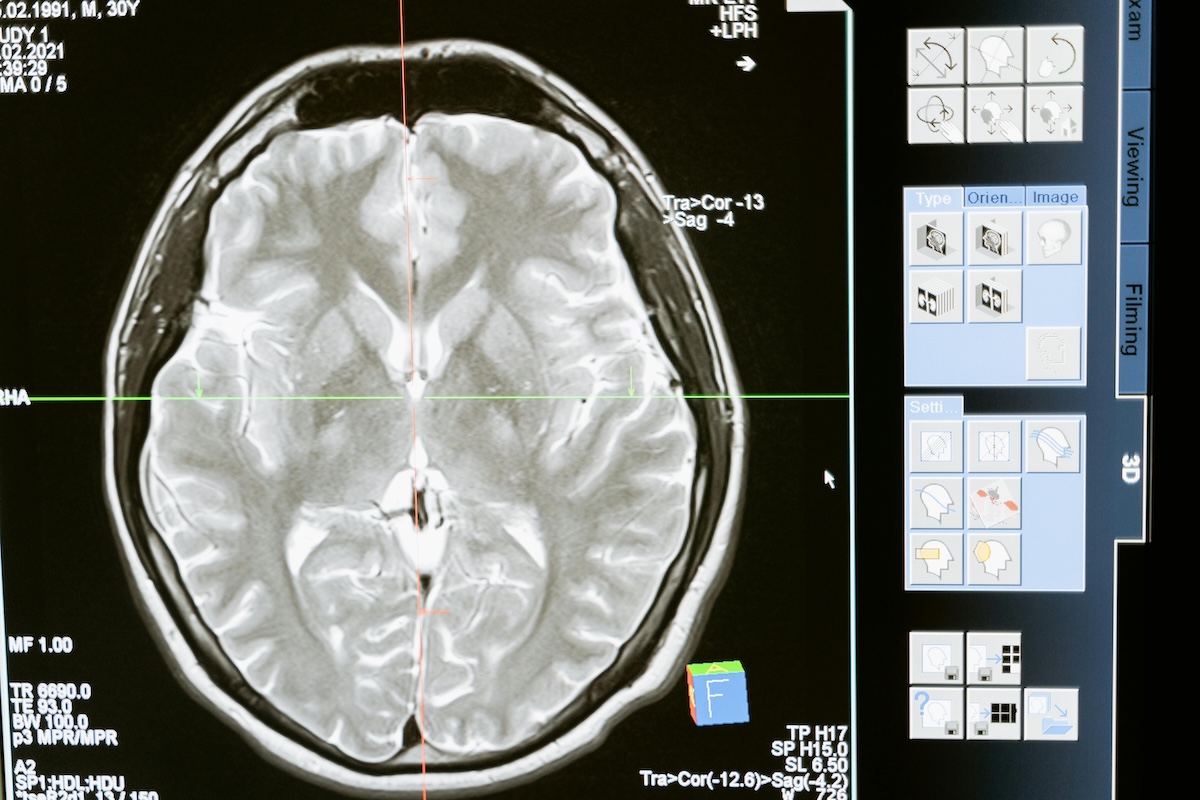When life feels overwhelming and emotions seem too complex to untangle, sometimes the simple act of putting pen to paper can offer profound relief. While many people keep diaries to record daily events, journaling for therapy takes this practice to a deeper level—one that can genuinely transform your mental and emotional health.
Therapeutic journaling isn’t just about documenting what happened in your day. It’s a structured approach to processing difficult emotions, traumatic experiences, and life stressors through written emotional disclosure. This practice, backed by over three decades of scientific research, has shown remarkable benefits for both mental and physical health.
In this comprehensive guide, we’ll explore the science behind therapeutic writing, walk you through proven techniques, and show you how to integrate this powerful tool into your healing journey—whether you’re working with one of our therapists or seeking support on your own.
If you want to skip the science and background info, you can go straight to the step-by-step instructions or the journaling prompts sections below.
Key Takeaways
• Dr. James Pennebaker’s expressive writing protocol shows proven benefits for physical and mental health
• One approach to therapeutic journaling involves writing about emotional experiences for 15-20 minutes daily over 3-4 consecutive days
• Research indicates that regulary journaling reduces anxiety, improves immune function, enhances memory, and promotes better sleep
• This practice helps process trauma, identify patterns, and create emotional clarity outside of traditional therapy sessions
• Journaling serves as a safe, private outlet for exploring difficult emotions and experiences
What Is Therapeutic Journaling?
Therapeutic journaling represents a deliberate shift from casual diary keeping to intentional emotional exploration. While regular journal entries might focus on daily events—what you ate, where you went, who you saw—therapy journaling dives deeper into your inner emotional experience.
At its core, this practice involves writing about your deepest thoughts and feelings surrounding stressful events, traumatic experiences, or ongoing life challenges. The goal isn’t to create beautiful prose or document facts, but to process emotions and hopefully create meaning from difficult experiences.
This distinction matters because the therapeutic benefits come specifically from the emotional processing involved, not just recording events. When you write about an event with an emotional focus rather than a factual one, you engage different parts of your brain and trigger built-in healing mechanisms in your brain and nervous system.
The Science Behind Therapeutic Writing
The foundation of modern therapeutic writing research begins with Dr. James Pennebaker’s groundbreaking work at the University of Texas, starting in 1986. His studies established what we now know as the expressive writing protocol—a specific method of therapy journaling that has been replicated and validated across numerous clinical populations.
Pennebaker’s original research involved asking students to write about traumatic experiences for 15-20 minutes over four days. The results were striking: participants showed improved immune system functioning, made fewer visits to doctors, and reported better overall well being compared to those who wrote about superficial topics.
The neurological changes that occur during therapeutic writing are particularly fascinating. Brain imaging studies reveal increased activity in the prefrontal cortex—the brain region responsible for executive function and meaning-making—while activity decreases in the amygdala, which processes fear and emotional arousal.
This pattern suggests that writing about emotional experiences helps your brain literally reorganize traumatic memories, moving them from raw emotional storage into more manageable narrative form. In other words, these writing exercises help take the edge off of traumatic events, contributing to your well-being.
Proven Health Benefits of Therapeutic Journaling
The research on journaling for therapy reveals benefits that extend far beyond what many people might expect from such a simple practice. These health outcomes have been documented across diverse populations and consistently replicated in clinical studies.
Mental Health Benefits
The mental health benefits of therapy journaling are both immediate and long-lasting. Studies consistently show that people who engage in expressive writing experience significant improvements in emotional regulation and psychological well-being.
Anxiety reduction represents one of the strongest documented effects. For many people, this level of anxiety relief can make the difference between feeling overwhelmed and feeling capable of coping with daily stressors.
For trauma survivors, the reduction in PTSD symptoms offers hope for healing outside traditional treatment settings. While crafting journal entries shouldn’t replace professional trauma treatment, it provides an accessible tool that can complement therapy nicely.
Perhaps most importantly, regular journaling sessions help develop deeper understanding of your emotional patterns. Many people discover triggers they hadn’t recognized, identify coping strategies that work, and gain insight into recurring relationship dynamics or thought patterns.
Physical Health Benefits
The physical health benefits of therapeutic journaling might surprise you too, but they’re well-documented across multiple studies. Our immune system, in particular, responds positively to emotional processing through writing.
Research participants who completed Pennebaker’s expressive writing protocol showed stronger immune responses when later given vaccinations. They also reported fewer cold and flu symptoms in the months following their journaling sessions. Some studies have even found improvements in lung functioning and reduced inflammation markers in people with chronic medical conditions.
Sleep improvements are another significant benefit. If you’ve ever found yourself lying awake replaying stressful events or worrying about unresolved issues, you’ll understand why emotional processing through writing can lead to more restful sleep. When you work through these thoughts and feelings on paper, your mind doesn’t need to keep cycling through them at bedtime.
The physical health benefits extend to improved working memory capacity. When traumatic or stressful experiences remain unprocessed, they can consume mental resources and make it harder to focus on other tasks. Journal writing helps free up this cognitive space, leading to better concentration and mental clarity.
How Therapeutic Journaling Works
Understanding the psychological mechanisms behind therapeutic writing can help you appreciate why such a simple practice produces such profound results. As we shall see, the process works on several levels simultaneously, each contributing to the overall healing effect.
The most fundamental mechanism involves narrative formation. Traumatic or highly stressful experiences often remain fragmented in memory—stored as disconnected images, sensations, and emotions rather than coherent stories. When you write about these experiences repeatedly over consecutive days, you begin to create a narrative structure that helps your brain organize and integrate the memories. Doing this in parallel with making sense of these stories in counseling sessions just amplifies the benefit you are receiving from your therapy work.
This process of turning chaos into story serves multiple functions. It helps you identify patterns in your emotional responses, recognize your own resilience and coping abilities, and often reveals new perspectives on difficult experiences. Many people find that writing about the same topic across multiple sessions helps them see their situation from a different perspective each time.
Emotional disclosure through writing also breaks cycles of avoidance and rumination. When you’re struggling with difficult emotions, you might find yourself either obsessively thinking about the situation or actively trying not to think about it. Both approaches can be exhausting and often make the emotional distress worse.
Therapeutic writing offers a middle path—a structured way to engage with difficult emotions that has a clear beginning and end. You process the feelings without becoming overwhelmed by them, and you gain control over when and how you engage with challenging material.
The requirement to write continuously throughout each journaling session is crucial to this process. When you write without stopping to edit or censor yourself, you bypass the mental filters that might normally prevent you from accessing deeper emotions or insights.
Step-by-Step Guide to Therapeutic Journaling
Implementing therapeutic journaling effectively requires following specific guidelines that have been validated through research. While the process might seem simple, attention to detail can significantly impact your results.
Setting Up Your Environment
Choose a quiet, private space where you won’t be interrupted for 20 minutes. This might be your bedroom, a corner of your living room, or even your car if that’s the most private space available. The key is ensuring you feel safe to express yourself honestly without worrying about being distracted or interrupted.
Choosing Your Materials
You can write by hand or use a computer—research hasn’t definitively shown that one method is superior to the other. Some people find that handwriting slows them down in a way that promotes deeper reflection, while others prefer the speed and ease of typing. Choose whatever feels most comfortable and natural for you.
For processing single-event memories, interactions, or traumas consider using Pennebaker’s four-day protocol.
The Four-Day Protocol
Day 1: Begin by writing about a significant traumatic event or ongoing source of stress in your life. Focus not just on what happened, but on how it affected you emotionally, physically, and socially. Write continuously for 15-20 minutes without worrying about grammar, spelling, or creating coherent sentences. If you run out of things to say, keep your pen moving or hands typing—sometimes breakthrough insights emerge from these moments of apparent emptiness.
Day 2: Return to the same topic, but allow yourself to explore different aspects or go deeper into the emotions you touched on yesterday. You might find yourself remembering details you hadn’t thought about before, or seeing connections you hadn’t previously recognized.
Day 3: Continue with the same topic, focusing on how this experience has shaped you or what you’ve learned from it. Consider how it has affected your relationships, your view of yourself, or your approach to life.
Day 4: Complete your exploration of this topic by writing about how you see yourself moving forward. What insights have emerged from the previous three days? How might you apply what you’ve learned?
Safety Considerations
If you begin to feel overwhelmed, dissociated, or experience panic symptoms during a journaling session, stop writing and use grounding techniques. Focus on your breathing, notice five things you can see around you, or engage in another calming activity. If distressing symptoms persist, consider seeking professional advice from your therapist before continuing with the practice.
Other Therapy Journaling Ideas
If you are looking for something more regular than a four-day, focussed approach, you might consider trying to just journal 2 or 3 times a week. The important thing here is to develop a healthy, productive habit: not create an arduous, uninviting routine.
Alternatively, you could just consider journaling before and after your counseling appointment. Journaling beforehand can help you focus in on exactly what you would like to explore with your therapist, saving you valuable time at the start of session. And journaling after the session is over can help to consolidate the important progress you made during therapy.
Therapeutic Journaling Techniques and Prompts
While the basic 4-day expressive writing protocol provides a solid foundation, specific prompts can help guide your exploration and ensure you’re addressing the areas most relevant to your healing goals. Different types of prompts serve different therapeutic purposes and so here are some great ideas to get you started.
Self-Reflection Prompts
These prompts help you develop deeper self-understanding and clarify your values, strengths, and goals:
• “Describe a moment when you felt most authentically yourself. What was happening, and what made that experience feel so genuine?”
• “What core value guides most of your important decisions? Write about how this value developed and how it shows up in your daily life.”
• “Think about a challenge you’ve overcome in the past. What strengths did you discover about yourself through that experience?”
• “If your best friend described your most admirable qualities, what would they say? How do these qualities serve you in difficult times?”
• “Write about a dream or goal that excites you. What steps could you take to move closer to this vision?”
Emotional Processing Prompts
These prompts help you explore and process difficult emotions:
• “Describe a time when you felt overwhelming anger. What triggered this feeling, and how did you cope with it? What was your anger trying to tell you?”
• “Write about a loss that still affects you. How has this experience changed you, and what have you learned about your capacity to heal?”
• “Explore a fear that limits you. Where do you think this fear originated, and how might your life be different if this fear had less power over you?”
• “Describe a situation where you felt deeply ashamed. How do you view that experience now, and what would you tell someone else facing a similar situation?”
• “Write about a time when you felt completely overwhelmed. What resources did you draw upon to cope, and what did you learn about your resilience?”
Relationship and Social Connection Prompts
These prompts explore your connections with others and patterns in your relationships:
• “Describe someone who has had a positive impact on your life. What qualities did they bring to your relationship, and how have they influenced who you are today?”
• “Write about a conflict in an important relationship. What underlying needs or values were at stake for each person involved?”
• “Explore a pattern you notice in your relationships. Does this pattern serve you, or would you like to change it?”
• “Describe what makes you feel most supported and understood by others. How can you communicate these needs more clearly?”
• “Write about a relationship that has ended. What did you learn from this experience about yourself and what you value in connections with others?”
Journaling Prompts For After Therapy Sessions
- “What stood out to me the most from today’s session?”
- “What emotions am I feeling now that the session is over? Where am I noticing these in my body?”
- “What beliefs, behavior patterns, or even something surprising did I learn about myself today?”
- “Is there anything I didn’t say but wish I had? What might have got in the way of me sharing this?”
- “What is one small thing I want to practice or reflect on between this counseling session and the next?”
Integrating Journaling with Professional Therapy
Therapeutic journaling works exceptionally well as a complement to professional therapy, and many of our therapists actively encourage clients to maintain a journal between sessions. This integration can enhance the effectiveness of both practices.
Preparing for Therapy Sessions
Use journaling to prepare for your next session by processing thoughts and emotions that have come up since your last appointment. This preparation can help you use your therapy time more effectively by arriving with clarity about what you want to discuss and explore.
Many people find that writing about challenging experiences before their therapy session helps them articulate their feelings more clearly when they’re face-to-face with their therapist. The act of putting emotions into words through writing often makes it easier to discuss these same topics verbally.
Sharing Insights with Your Therapist
While your journal remains private unless you choose to share it, you might find it helpful to discuss insights or patterns you’ve discovered through writing. You don’t need to read your entries aloud or share the specific details—simply talking about what you’ve learned can deepen your therapeutic work.
Some therapists might suggest specific writing exercises tailored to your treatment goals. For example, if you’re working on anxiety management, your therapist might recommend writing prompts that help you identify triggers and coping strategies, or they might ask you to notice where these feelings originate in your body and when.
Maintaining Momentum Between Sessions
Therapy journaling helps maintain therapeutic momentum between appointments. Rather than letting insights fade or problems build up over the week or two between sessions, regular writing keeps you engaged in the process of self-reflection and emotional processing.
This continuity can accelerate your progress and help you feel more situated in your healing journey even when you’re not meeting with us via secure video call.
Common Challenges and Solutions
Like any therapeutic practice, journaling for therapy can present obstacles. Understanding these common challenges and having strategies to address them can help you maintain a consistent and beneficial practice.
Overcoming Resistance and Writer’s Block
Many people feel stuck when they first sit down to write about emotional experiences. This resistance is natural—your mind might be protecting you from difficult feelings. Start small by setting a timer for just five minutes and committing to write anything that comes to mind, even if it starts with “I don’t know what to write!”
Also, beginning with less emotionally charged topics can help you get comfortable with the process before moving to more difficult material. You might start by writing about a mildly stressful situation before tackling a traumatic one.
Managing Overwhelming Emotions
It’s common to feel worse immediately after a journaling session, especially when you’re processing traumatic material. This temporary increase in distress often indicates that you’re accessing important emotional material that needs attention. It can be hard work, and it’s normal to feel a little bit of dread, even.
However, if you consistently feel flooded or unable to cope after writing, consider modifying your approach. You might try shorter writing sessions, focus on less intense topics, or ensure you have adequate support and grounding strategies in place before and after writing.
Dealing with Perfectionism
Remember that therapeutic writing is not about creating beautiful prose or grammatically correct sentences. In fact, editing and censoring yourself can interfere with the emotional processing that makes this practice effective. Give yourself permission to write messily, to repeat yourself, or to jump between topics.
If perfectionist tendencies are strong, try writing with your non-dominant hand, writing in stream-of-consciousness style, or setting a very fast pace that doesn’t allow time for editing.
Maintaining Consistency
The research on expressive writing emphasizes the importance of consecutive days of practice, but many people struggle to maintain consistency. Try linking your journaling practice to an existing habit, such as having your morning coffee or preparing for bed.
And if you miss a day, don’t abandon the practice entirely. Be kind to yourself! While consecutive days are ideal, returning to writing after a break is still beneficial and you can just jump back in where you left off.
Long-Term Benefits and Sustainable Practice
While Dr. James Pennebaker’s original research focused on intensive four-day periods, many people find that incorporating therapeutic writing into their long-term self-care routine provides ongoing benefits.
Adapting Frequency to Your Needs
Consider using the four-day protocol for debriefing after intense sessions or when a session brings up a particularly intense reaction for you. Otherwise, you might choose to journal daily, every other day, or just weekly between sessions. Some people maintain a regular practice by dedicating 20 minutes every Sunday to process the week’s events, therapy session, and emotions.
There’s no single right frequency; the key is finding a rhythm that supports your emotional health without becoming burdensome.
Tracking Progress and Growth
One of the unique benefits of maintaining journal entries over time is the ability to review your emotional growth and development. Reading entries from months or years ago often reveals how much you’ve learned, how your coping strategies have evolved, and how your perspective on past events has shifted.
This review process itself can be therapeutic, helping you recognize your resilience and capacity for healing. Many people are surprised to discover how much wisdom and insight they’ve gained through their writing practice.
Pattern Recognition and Prevention
Long-term journaling often reveals patterns in your emotional responses, relationship dynamics, or life stressors. Recognizing these patterns can help you respond more skillfully to future challenges and sometimes prevent problems before they become overwhelming.
For example, you might notice that certain types of situations consistently trigger anxiety, or that particular relationship dynamics tend to repeat themselves. This awareness creates opportunities for growth and change.
Integration with Other Wellness Practices
Many people find that therapeutic journaling integrates well with other wellness practices. You might combine writing with mindfulness practice, meditation, or physical exercise. Some people use their journal writing as a way to process emotions that arise during yoga or meditation sessions.
The key is finding combinations that support your overall emotional health and well-being rather than creating additional pressure or obligation.
FAQ
How long should I write during each therapeutic journaling session?
Research supports 15-20 minutes as the optimal duration for therapeutic writing sessions. This timeframe is long enough to move past surface thoughts and access deeper emotions, but not so long that you become overwhelmed or fatigued. If you’re new to the practice, you might start with 10-minute sessions and gradually increase the duration.
Is it better to write by hand or type on a computer for therapeutic journaling?
Both methods can be effective, and the research doesn’t definitively favor one over the other. Some people find that handwriting slows them down in a way that promotes deeper reflection, while others prefer the speed and ease of typing. Choose the method that feels most natural and comfortable for you, as consistency matters more than the specific medium.
What should I do if journaling makes me feel worse instead of better?
Feeling temporarily worse after a journaling session is actually common and often indicates that you’re processing important emotional material. However, if distress persists or feels unmanageable, consider reducing the intensity of your writing topics, shortening your sessions, or seeking professional advice. Therapeutic writing should challenge you emotionally but shouldn’t leave you feeling unable to cope.
Can I do therapeutic journaling if I’m already seeing a therapist?
Absolutely. Many therapists encourage journaling as a complement to therapy sessions. Writing can help you process thoughts and feelings between appointments, prepare topics to discuss in session, and maintain therapeutic momentum. Just be sure to discuss your journaling practice with your therapist so they can help you integrate it effectively into your overall treatment.
How is therapeutic journaling different from keeping a regular diary?
The key difference lies in focus and intention. Regular diary keeping typically documents daily events and activities, while therapeutic journaling deliberately explores emotional experiences and their impact. Therapeutic writing emphasizes feelings, thoughts, and meaning-making rather than external events. The research-backed benefits come specifically from this emotion-processing focus.
Is it safe to do therapeutic journaling if I have a history of trauma?
Many trauma survivors find therapeutic writing helpful, but it’s important to approach the practice thoughtfully. If you have a history of severe trauma or complex PTSD, consider working with a therapist who can provide guidance and support. Start with less intense topics and ensure you have adequate coping strategies and support systems in place. If writing triggers significant distress or trauma responses, pause the practice and seek professional guidance.
How soon can I expect to see benefits from therapeutic journaling?
Some people notice benefits after just a few sessions, particularly improvements in sleep quality or feeling more calm. However, deeper changes in anxiety, depression, or trauma symptoms typically take several weeks or months of consistent practice. The research shows that benefits can continue to develop over time, especially when journaling becomes a regular part of your self-care routine.
Should I share my therapeutic journal with anyone else?
Your journal is private unless you choose to share it. While you might find it helpful to discuss insights or patterns you’ve discovered through writing with a therapist or trusted friend, sharing the actual content is entirely your choice. Many people find that the privacy of their journal allows them to explore thoughts and feelings they wouldn’t feel comfortable discussing with others, which is part of what makes the practice so effective.
Therapeutic journaling offers a remarkable combination of accessibility, effectiveness, and empowerment. Unlike many therapeutic interventions, this practice requires no special equipment, training, or appointments—just your willingness to explore your inner world with curiosity and compassion.
Whether you’re dealing with acute stress, processing past trauma, or simply seeking deeper self-understanding, the simple act of putting your thoughts and feelings into words can be profoundly healing. The decades of research supporting this practice provide confidence that you’re engaging in something genuinely beneficial for your mental and physical health.
Remember, healing is a journey, and journaling for therapy offers a powerful, accessible tool to support you along the way. Start with just 15 minutes and four days—you might be surprised by the insights and relief that emerge from this deceptively simple practice.







